Приложение
Как установить приложение на iOS
Смотрите видео ниже, чтобы узнать, как установить наш сайт в качестве веб-приложения на домашнем экране.
Примечание: This feature may not be available in some browsers.
Вы используете устаревший браузер. Этот и другие сайты могут отображаться в нём некорректно.
Вам необходимо обновить браузер или попробовать использовать другой.
Вам необходимо обновить браузер или попробовать использовать другой.
Личностный рост [Созвездие] [Елена Ушкова] Формула Души (2023)
- Пользователь tttx
- Дата Саморазвитие / Психология / Эзотерика

ОПИСАНИЕ:
Описание курса:
Знакомься - это ты! А это твоё окружение! Начинай консультировать!
Курс знакомит нас с основными принципами астрологии: Планеты, знаки Зодиака, стихии, кресты, типы людей. Учит строить и толковать Формулу твоей Души. Там ты узнаешь основную свою мотивацию, черты характера, таланты и способности. Это поможет тебе вдохновиться на новый этап развития, взглянуть на себя с другого ракурса, понять близких и родных.
Что входит в курс обучения «Формула Души»?
1. Основные принципы астрологии
Вы получите ответы на базовые вопросы: что изучает астрология? Кому и для чего она необходима? Каковы ее главные принципы? Получите...
Самодисциплина [Елена Резанова] Как сохранять мотивацию и силу на пути к долгосрочной цели (2024)
- Пользователь tttx
- Дата Самодисциплина

ОПИСАНИЕ:
Как сохранять мотивацию и силу на пути к долгосрочной цели и как переживать отказы, неудачи и критику, не повредив своей профессиональной самооценки
Субботний воркшоп и неделя на вопросы и ответы
20 апреля в 9 утра по Парижу
Автор: Елена Резанова. Самореализация - ключевая тема моей работы. Уже больше 10 лет я занимаюсь этим вопросом как карьерный стратег, об этом я пишу книги, читаю лекции и консультирую компании. В целом в теме карьеры я с 2001 года.
Я хочу чувствовать свой вклад в то, что работа и карьера становится более человеко-ориентированной. Представление о профессиональном успехе постепенно меняется - мы уходим от...
Психотерапия [Наталья Приймаченко] Комплекс неполноценности (2024)
- Пользователь tttx
- Дата Психотерапия

ОПИСАНИЕ:
Комплекс неполноценности [Наталья Приймаченко]
Как понять, что страдаешь от комплекса неполноценности?
Этот комплекс есть у каждого человека, и кроме очевидных минусов, несет в себе и плюсы.
Например, двигает нас в развитии и помогает больше считаться с другими людьми. Но порой он сильно портит нам жизнь.
Комплекс неполноценности влияет на все сферы жизни, и часто мы принимаем его голос за объективную реальность
Поэтому с ним так сложно бывает справиться.
Как не позволить этому комплексу разрушить свою жизнь? Нужно ли от него избавляться?
Или его достаточно приручить, чтобы он начал приносить пользу? - В наших комплексах скрыт огромный...
Личностный рост [Елена Дунаева] Здоровье. Скорая помощь (2024)
- Пользователь tttx
- Дата Саморазвитие / Психология / Эзотерика
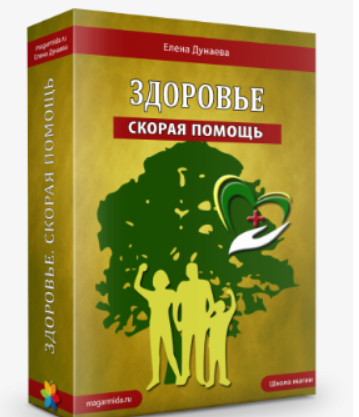
ОПИСАНИЕ:
Видеокурс состоит из четырех уроков (продолжительность 8 часов). Он включает в себя методы излечения часто встречающихся заболеваний. По сути, это скорая помощь, которую может использовать абсолютно любой человек, даже тот, кто не знаком с магическими практиками. Представляя то или иное действие, он может значительно облегчить состояние другого человека или полностью устранить болезнь или ее проявления.
Из видеокурса вы узнаете о следующих системах:
- опорно-двигательной, пищеварительной
- кровеносной
- дыхательной
- выделительной
- нервной
- эндокринной
- иммунной
Астрология [Инесса Крыжановская] Астрология 2.0. Тариф Лайт (2024)
- Пользователь tttx
- Дата Астрология

ОПИСАНИЕ:
ВЫ ИЗУЧИТЕ:
РЕКТИФИКАЦИЮ
Профессиональный астролог не имеет права прогнозировать будущее клиенту, если не уточнит время рождения.
Как правило, гороскоп включается плюс/минус 10-15 минут от зафиксированного времени рождения.
ЗОДИАКАЛЬНЫЕ ДИРЕКЦИИ
Дирекция после транзитов – одна из самых важных прогностических техник.
Если Вы овладеете дирекциями и транзитами, то прогнозировать события будущего сможете с высокой вероятностью исполнения.
СОЛЯРНЫЙ ГОРОСКОП
Это исключительно годовая карта, поэтому по соляру прогнозируют год от одного дня рождения до следующего.
Соляр показывает главную тему года, тенденции, природу и...
Здоровье / Внешний вид [Татьяна Курчина] Техника ПИР. Тариф "Доступ 1 месяц" (2024)
- Пользователь tttx
- Дата Здоровье / Внешний вид / Питание

ОПИСАНИЕ:
Интенсив для вас, если:
- Хотите замедлить процессы старения и уменьшить возрастные изменения
- Хотите получить пошаговый план работы с лицом и телом, который работает и дает результат
- Хотите получить индивидуальный разбор лица и рекомендацию от специалиста
- Хотите уменьшить отечность на лице, носогубные складки, межбровные морщины, улучшить питание кожи и самое главное научится системной и комплексной работе под руководством специалистов
Простые упражнения, направленные на нормализацию тонуса мышц, которые занимают всего 6-8 минут.
Вы легко их запомните и сможете применять всю жизнь.
С...
Здоровье / Внешний вид [Татьяна Курчина] Пергамент. Тариф "Доступ 3 месяца" (2024)
- Пользователь tttx
- Дата Здоровье / Внешний вид / Питание
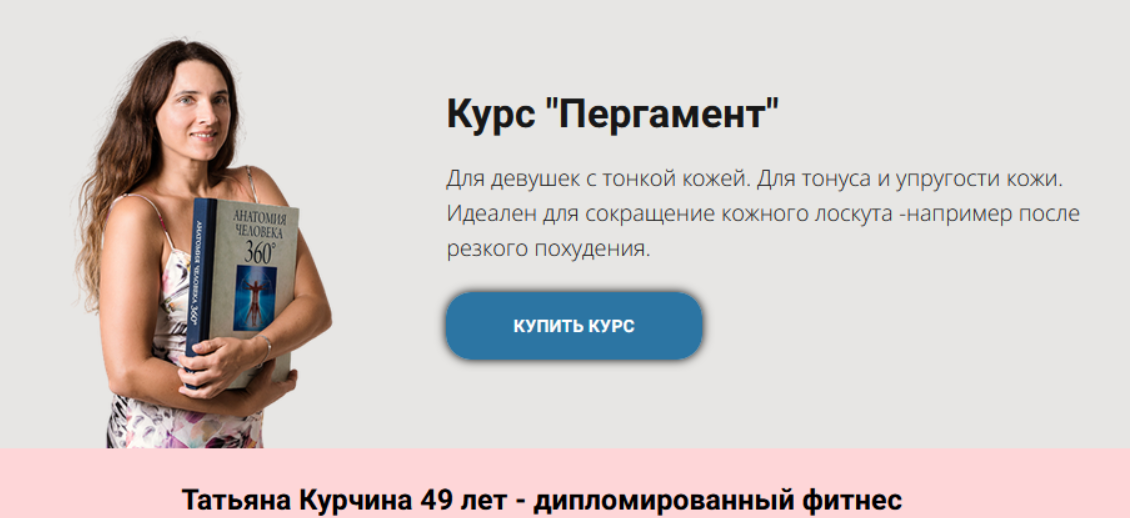
ОПИСАНИЕ:
Пергамент [Тариф "Доступ 3 месяца"] [Татьяна Курчина]
- Для девушек с тонкой кожей.
- Для тонуса и упругости кожи.
- Идеален для сокращение кожного лоскута -например после резкого похудения.
- Повышает упругость кожи
- Улучшает тургор кожи и стимулирует выработку коллагена
- Уменьшение морщин и улучшение цвета лица
- Обвисшая, утратившая тонус кожа
- Оплывший контур лица, брыли
- Тонкая кожа
- Тусклый цвет лица
- Мимические морщины
- Нехватка питательных веществ и кислорода в клетках эпидермиса
- Снижение тургора
- Возрастные изменения
Здоровье / Внешний вид [Григорий Крутов] Психосоматика внутренних органов. Полный цикл 6 вебинаров (2020)
- Пользователь tttx
- Дата Здоровье / Внешний вид / Питание

ОПИСАНИЕ:
Желудок умнее мозга, потому что желудок умеет тошнить.
Мозг же глотает любую дрянь.
Чингиз Айтматов
Будем разбираться с этим на цикле вебинаров по психосоматике внутренних органов. Мы поговорим о взаимосвязи органов и эмоций и о том, как позаботиться о здоровье на физическом и психологическом уровне.
Для кого эти вебинары:
Для специалистов, занимающихся телесными практиками: остеопатов, кинезиологов, психологов, массажистов и т.д.
Для широкого круга слушателей, чтобы научиться понимать сигналы тела и знать, что с этим делать.
Вы узнаете:
- как эмоциональные дисфункции проявляются на уровне тела;
- какие...
Здоровье / Внешний вид [Марина Осецкая] Меню БУЧ. Белково-углеводное чередование (2024)
- Пользователь tttx
- Дата Здоровье / Внешний вид / Питание

ОПИСАНИЕ:
БУЧ - белково/углеводное чередование, система питания на которой
- ты сыта
- вес уходит
- метаболизм раскачивается
- жир горит, а мышцы остаются
После 3х месячного, не очень хорошего образа жизни в плане питания , стрессов, переездов , без регулярных тренировок , ко мне прилипло 4 кг!
Я сделала, очень простую и доступную программу БУЧ, с легкими рецептами , обычными блюдами !
Но с мега быстрым взрывным результатом!!!
Только с БУЧ вы можете избавиться не только от отеков , но и от жира и не потерять...
Здоровье / Внешний вид [Татьяна Курчина] Шикарная я. Обновление. Тариф "Доступ 1 месяц" (2024)
- Пользователь tttx
- Дата Здоровье / Внешний вид / Питание
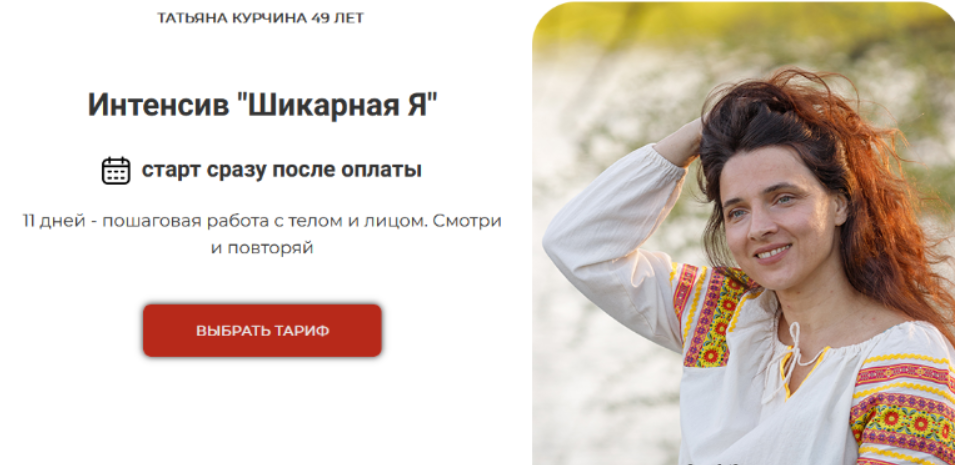
ОПИСАНИЕ:
Курс для Вас если:
- Хотите замедлить процессы старения и уменьшить возрастные изменения
- Хотите получить пошаговый план работы с лицом и телом, который работает и дает результат
- Хотите уменьшить отечность на лице, носогубные складки, межбровные морщины
- Хотите научится системной и комплексной работе
День 1
Красота лица начинается со стоп
Точечный массаж лица
День 2
Техника коррекции подошвенного апоневроза стопы
Проработка сухожильного шлема. Убираем морщинки и улучшаем рост волос
День 3
Убираем дисфункции в грудобрюшной и тазовой диафрагмах
Самомассаж...
Маркетплейсы [olesya_marketingg] [Олеся] Внешняя реклама для маркетплейсов (2023)
- Пользователь tttx
- Дата Маркетплейсы

ОПИСАНИЕ:
Большой обучающий курс для менеджеров по внешней рекламе
Наконец готов мой авторский, большой курс по внешке, на котором я не просто расскажу про блогеров, а научу Вас разбираться в маркетинговых процессах по работе с маркетплейсами.
Без лишних "прелюдий" и "уговоров", кратко ⤵
Длительность 1 месяц
Поддержка 2 месяца
Общий чат участников, где все будут обмениваться опытом.
Курс больше подойдет именно для менеджеров, которые уже работают с маркетплейсами и хотят увеличить свой доход.
Но и селлеры тоже могут его пройти.
Старт курса 12 декабря...
Маркетинг [Ника Попылина] Таргетолог на все 100. Тариф "С куратором до результата" (2024)
- Пользователь tttx
- Дата Маркетинг

ОПИСАНИЕ:
Таргетолог на все 100. Тариф "С куратором до результата" (Ника Попылина)
ДЛЯ КОГО КУРС?
Для новичков в таргете
Вы никогда не настраивали таргетированную рекламу, но хотите во всем разобраться, обучиться востребованной онлайн-профессии и зарабатывать удаленно.
Ваш результат через 4 недели:
Освоите востребованную онлайн-профессию, сделаете и оформите свой первый кейс, заработаете первые деньги удаленно.
Для таргетологов
Вы уже работаете и зарабатываете в данной сфере, но хотите прокачать свои знания и навыки, узнать новые фишки.
Ваш результат через 4 недели:
Повысите уровень своих компетенций, узнаете пути масштабирования и...
Маркетплейсы [Женя Бурцева] [burtseva.jenya] Как зарабатывать на инфографике для маркетплейсов (2024)
- Пользователь tttx
- Дата Маркетплейсы

ОПИСАНИЕ:
Самый эффективный курс по инфографике. Заработок прямо во время учебы.
Программа курса. 27 уроков
Введение
О моем пути в дизайне, что такое профессия Дизайнер инфографики
Модуль 1. С чего начать
Урок 1. Что такое инфографика? Карточка товара
Урок 2. Изучение ЦА
Урок 3. Анализ конкурентов
Урок 4. Продающие фразы
Урок 5. Приемы композиции
Урок 6. Знакомство с Figma
Модуль 2. Что упростит вам работу
Урок 1. Работа с референсами
Урок 2. Составление мудборда
Урок 3. Шрифты
Урок 4. Как выбрать иконки?
Урок 5. Цветовые сочетания. Круг Иттена
Урок 6. Ошибки при выборе цвета
Модуль 3. Работа в FIGMA
Урок 1. Как вырезать...
Маркетплейсы [Виталий Окунев] Менеджер маркетплейсов от А до Я (2024)
- Пользователь tttx
- Дата Маркетплейсы

ОПИСАНИЕ:
Менеджер маркетплейсов от А до Я [Виталий Окунев]
Программа курса:
Модуль 1. Введение в курс и профессию
Урок 1. Знакомство со структурой и регламентом курса. Постановка целей на курс
Урок 2. Урок с психологом
Урок 3. Разбор основных маркетплейсов
Урок 4. Алгоритм работы маркетплейса. Роль менеджера
Урок 5. Способы заработка и варианты сотрудничества с селлерами
Урок 6. Ценообразование услуг менеджера. Как увеличить чек и выстроить очередь из клиентов
Результат: Вы подробно познакомитесь с профессией «Менеджер маркетплейсов» и с основными направлениями заработка
Модуль 2. Форма деятельности и документация
Урок 1. Выбор формы...
Бизнес [Светлана Андреева] Секреты правильного прайса (2022)
- Пользователь tttx
- Дата Бизнес, маркетинг и менеджмент

ОПИСАНИЕ:
Благодаря этому курсу вы узнаете:
• как создать прайс, чтобы он не был, а работал
• повышать, понижать или не трогать?
• основные способы ценообразования
• как поднимать цены и при этом не потерять клиентов
• что такое «психологически комфортный прайс» для всех
Я расскажу о всех особенностях и подводных камнях.
Покажу примеры, когда клиенты мечтают заплатить больше.
Укажу на ошибки, которые роняют ваш доход и репутацию.
Эта тема актуальна всегда!⠀
ПЕРЕД ВАМИ очень подробный и насыщенный семинар по ценообразованию.
Повышение прайса:
- Как правильно?
- Как часто?
- Как психологически комфортно?
Дизайн [KalachevaSchool] [Виктория Акулова] Наброски обнаженной натуры (2023)
- Пользователь tttx
- Дата Графика и дизайн

ОПИСАНИЕ:
«Наброски обнажённой натуры» — авторский онлайн-курс Виктории Акуловой посвящён акварельным зарисовкам фигуры человека.
Шаг за шагом вы создадите неповторимые по красоте и утончённости работы. В тенях, полунамёках, естественных позах и пластике тела таится источник бесконечного вдохновения для художника. Уверены, вы обязательно это почувствуете.
«Будем рисовать в технике «а-ля прима», работать с заливками и градиентами, создавать утончённые акварели поэтапно и много экспериментировать, — делится секретами курса Виктория Акулова, — Обещаю, будет красиво!»
На курсе «Наброски обнажённой натуры» вы:
— Научитесь...
Дизайн [ДКТ-М] [Алексей Наумчик] Настройка отражений фоном (2024)
- Пользователь tttx
- Дата Графика и дизайн

ОПИСАНИЕ:
Простой, быстрый и уникальный (идея автора) способ, чтобы вывести рендеры на новый уровень без десятка CoronaLight.
-Красивые блики и растяжки всего одним материалом за окном.
-Регулируй силу отражений одной кнопкой.
-Способ построения фона не имеет значения. Метод подходит под любой вариант.
-Такого не расскажут на курсах.
Необходимый уровень: практикующий
ПРОДАЖНИК:
СКАЧАТЬ:
Дизайн [Lisa Glanz] Идеальный набор кистей для Procreate. The Nitty Gritty Brushbox For Procreate (2023)
- Пользователь tttx
- Дата Графика и дизайн

ОПИСАНИЕ:
Представляем набор кистей Nitty Gritty Brushbox, систему кистей без усилий, которая позволяет легко добавлять текстуру к вашим рисункам в Procreate!
В коллекции yummy есть все необходимое для легкого создания художественных работ с богатой текстурой.
Набор кистей разработан специально для создания очаровательных причудливых рисунков, идеально подходящих для создания персонажей,
иллюстраций к детским книгам и великолепных произведений искусства для оформления поверхностей.
Используя кисти для рисования, наполнители, текстурирующие средства, штампы и все остальное, что между ними, вы в один миг создадите роскошную работу с богатой...
Дизайн [KalachevaSchool] [Вера Соколова] Личная подпись. Онлайн-курс каллиграфии (2022)
- Пользователь tttx
- Дата Графика и дизайн

ОПИСАНИЕ:
«Личная подпись» — новый онлайн-курс Веры Соколовой для всех, кто мечтает красиво подписывать свои работы, оставлять эффектные автографы, элегантно оформлять поздравительные открытки.
Создадим персональную подпись, применяя композиционное мышление и спонтанные движения руки.
Научимся подавать индивидуальный почерк красиво, встраивая в него эффектные росчерки и приёмы работы с композицией слова и буквы.
«Мой новый курс — размышление о том, как применить каллиграфию в личной подписи. Без разбора психологии почерка, использования сложных элементов, борьбы с пером и бумагой, — рассказывает Вера Соколова — Вместе мы поработаем с...
Программирование DigiStudio - ищем партнеров для взаимовыгодного сотрудничества!
- Пользователь DigiStudioWork
- Дата Программирование
Привет всем!
Я представляю компанию DigiStudio, и мы ищем партнеров для взаимовыгодного сотрудничества!
DigiStudio – это команда более чем из 30 опытных разработчиков, занимающихся разработкой веб-приложений, десктоп-приложений, ботов, дизайном и другими видами работ любой сложности. Мы предоставляем полный спектр услуг: от первоначальной идеи до реализации проекта, обеспечивая круглосуточную поддержку на всех этапах.
Почему выбирают нас:
- Комплексный подход к разработке и дизайну.
- Профессиональная команда с богатым опытом.
- Круглосуточная поддержка и внимание к каждому проекту.
Сейчас мы активно ищем партнеров для сотрудничества на взаимовыгодных условиях. Возможные форматы сотрудничества включают:
- Вы предоставляете нам...
Я представляю компанию DigiStudio, и мы ищем партнеров для взаимовыгодного сотрудничества!
DigiStudio – это команда более чем из 30 опытных разработчиков, занимающихся разработкой веб-приложений, десктоп-приложений, ботов, дизайном и другими видами работ любой сложности. Мы предоставляем полный спектр услуг: от первоначальной идеи до реализации проекта, обеспечивая круглосуточную поддержку на всех этапах.
Почему выбирают нас:
- Комплексный подход к разработке и дизайну.
- Профессиональная команда с богатым опытом.
- Круглосуточная поддержка и внимание к каждому проекту.
Сейчас мы активно ищем партнеров для сотрудничества на взаимовыгодных условиях. Возможные форматы сотрудничества включают:
- Вы предоставляете нам...
Личностный рост [Юлия Ивлиева] Проявленность. Масштаб (2024)
- Пользователь tttx
- Дата Саморазвитие / Психология / Эзотерика

ОПИСАНИЕ:
Проявленность. Масштаб [Юлия Ивлиева]
Сессия для тех, кто:
- Хочет раскрыть свою внутреннюю силу и обрести финансовое удовлетворение и свободу
- Прошел много обучающих программ, но нет результата
- Хочет увидеть свои способности и таланты и найти истинную уверенность и мотивацию
- Испытывает внутреннее напряжение и не может доверять, получать удовольствие от жизни
- Получил множество инструментов, но боится их применять
- Мечтает сменить профессию, но не решается
- Желает быть магнитом внимания и найти в себе источник энергии
Психотерапия [Татьяна Демидова] [Worldofpsychology] Психoлoгия нaрциссизма (2024)
- Пользователь tttx
- Дата Психотерапия

ОПИСАНИЕ:
Психoлoгия нaрциссизма [Worldofpsychology] [Татьяна Демидова]
Курс Психoлoгия нaрциссизма [Татьянa Демидовa]
Нарцисс одновременно привлекает и отталкивает. Он похож на современного сэра Ланселота с непередаваемым шармом и украшенный сияющими доспехами нашего времени: красивым портфолио и ослепительными приобретениями.
ЭЛИЗАБЕТ БОУЭН
Нет никого добрее нарцисса, пока вы живете по его правилам.
Остерегайтесь! Этот рыцарь – мастер иллюзий. На самом деле он может быть откровенно опасным.
Он может соблазнить вас своими достижениями, разумом и кажущейся безупречной самоуверенностью.
Однако его заносчивость, снисходительность, чувство...
Личностный рост [Ирина Тева Кумар] [МИП] 4 элемента проявленности и 8 упражнений по их раскрытию (2024)
- Пользователь tttx
- Дата Саморазвитие / Психология / Эзотерика
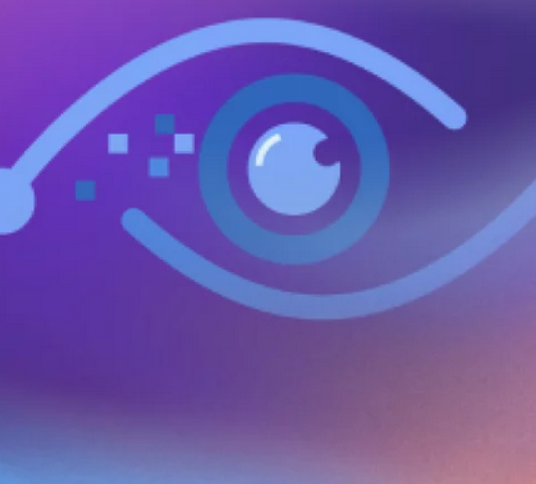
ОПИСАНИЕ:
4 элемента проявленности и 8 упражнений по их раскрытию [МИП] [Ирина Тева Кумар]
В каждом из нас заложены импульсы проявленности.
Почему же некоторые из них допускаются вовне, а некоторые так и остаются запертыми во внутреннем мире? А главное - как их освободить?
Вопреки распространенному мнению, проявленность - это не только про яркий личный бренд или собственный успешный проект.
Проявленность - гораздо шире.
Это способность понимать свои чувства, делиться ими, рассказывать о своих желаниях, отстаивать себя, свободно действовать.
Это возможность выносить во внешний мир то, что находится внутри.
У проявленного человека энергия...
Личностный рост [Наталья Патрушева] Крутая сука. 5 часть. Коммуникация со Вселенной. Тотальное получение (2024)
- Пользователь tttx
- Дата Саморазвитие / Психология / Эзотерика

ОПИСАНИЕ:
«Крутая сука» — авторский курс Натальи Патрушевой для тех, кто потерял контакт с собой и телом, устал от удобности, посредственности, неэффективных отношений и безденежья, забыл ощущение счастья и лёгкости.
Будет всё как мы любим: крышесносная осознанность с юмором и только работающими практическими инструментами, в том числе созидающими вопросами.
От правильно поставленного вопроса зависит наше будущее.
Кто такие «Крутые суки»?
Это люди, которые счастливы, успешны, легко получают желаемое, выбирают себя, при этом создавая огромные изменения для других и вдохновляя их на большее.
Крутая сука выбирает получать от жизни больше, она...
Самореализация [Олег Хомяк] [Apeiron] Стратегия жизни. Занятие 5 (2024)
- Пользователь tttx
- Дата Самореализация
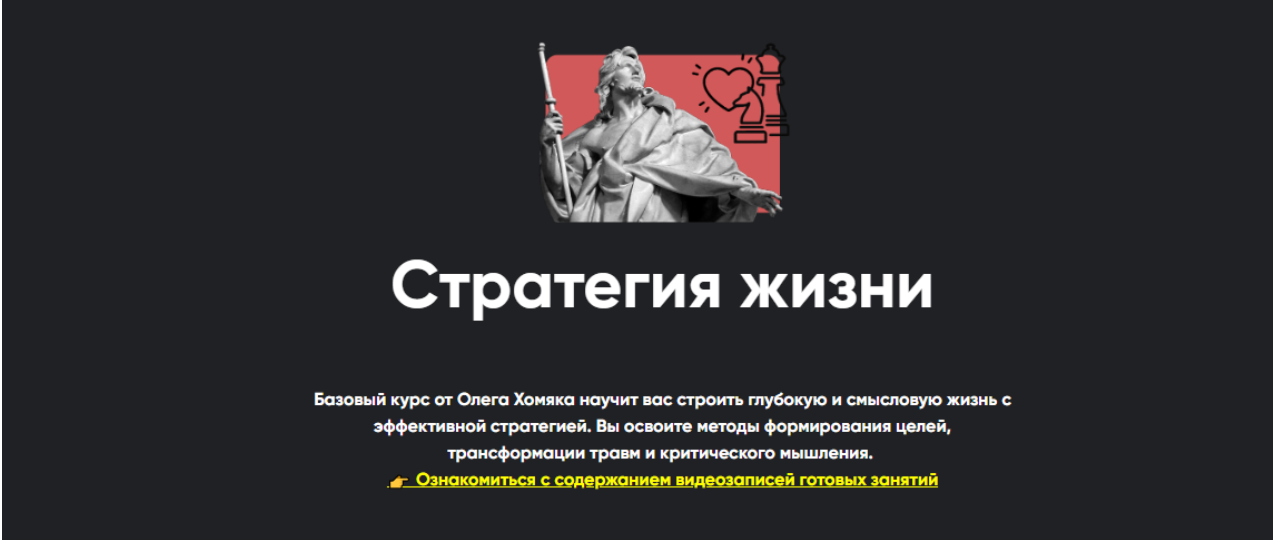
ОПИСАНИЕ:
В эпоху, когда мимолетные тренды и поверхностные меры успеха заполонили нашу культуру, курс «Стратегия жизни», созданный психологом Олегом Хомяком, предлагает вам научиться строить жизнь, наполненную глубиной, смыслом и стратегическим видением.
Это трансформационный курс, целью которого является развитие умения глубоко анализировать себя, окружающих людей и различные жизненные ситуации, включая сложные. Вы научитесь строить эффективную и сбалансированную стратегию своей жизни.
В процессе обучения вы освоите методы
- Формирования жизненных целей и пути к их достижению.
- Трансформации психологических травм в источник силы...
Зеркала проекта
Зеркала PirateHUB на случай блокировки основного адреса. Эти ссылки безопасны для использования. Также всегда актуальная ссылка доступна на этом сайте.
Рабочее s1 piratehubРабочее s2 piratehub
Рабочее s3 piratehub
Рабочее s4 piratehub
Недоступно в РФ openssource
Пользователи онлайн
- Ирунаромашка
- nsrwntjo
- kalanumis
- Kensy
- vladimir671games
- tttx
- arabchik
- SuperUser
- Glorik
- Leks
- namespace
- sivilla
- Helleger
- Inot77
- lady-bug
- солнце67098
- navi123
- yga-yga
- SvetS
- dekhto
- zxffredx
- Studia2Angela
- maxkrabov
- Overseere
- Julia23
- vortexkiel
- Podkaster
- estedaz
- magnifi
- Овсянникова
- magnif
- Gudvin
- 1Azimut1
- scampa
- xeabadnu
- Denissmi1
- Marlena
- dreamer
- eleyana
- anasdadia
- Lancelot55
- di3ain
- nastya777
- Spartus
- Foricova
- Tichon
- aleksust081224
- Morrr
- Valeryi
- Uytopixfo
Всего: 2,511 (пользователей: 181, гостей: 2,330)
Отзывы о курсах
-
-
KettirinkaКурс называется "Растим гения", а в начале обучения автор говорит, что взяла эту информацию из центра, где работают со сложными детьми (с отставание в развитии). Где в её курсе система - мне не очень понятно. Автор записала видео со своей дочкой, которая манерничает перед камерой, а мама на кадром умиляется. Описания упражнений не даны, а из видео с ребёнком не всегда понятны. Качество видео хорошее, есть даже какие-то раздаточные материалы. Ну, какие-то идеи можно из видео почерпнуть, если человек давно в теме. Но есть и откровенные ошибки. Поэтому курс в целом не рекомендую.
-
О нас
PirateHUB (ex. openssource) - это сообщество, объединяющее единомышленников, стремящихся к повышению своих профессиональных навыков и освоению новых областей. На нашем сайте вы можете бесплатно скачать самые актуальные и популярные курсы, книги, тренинги и вебинары, а также материалы по различным направлениям.
Пользователи онлайн
- Ирунаромашка
- nsrwntjo
- kalanumis
- Kensy
- vladimir671games
- tttx
- arabchik
- SuperUser
- Glorik
- Leks
- namespace
- sivilla
- Helleger
- Inot77
- lady-bug
- солнце67098
- navi123
- yga-yga
- SvetS
- dekhto
- zxffredx
- Studia2Angela
- maxkrabov
- Overseere
- Julia23
- vortexkiel
- Podkaster
- estedaz
- magnifi
- Овсянникова
- magnif
- Gudvin
- 1Azimut1
- scampa
- xeabadnu
- Denissmi1
- Marlena
- dreamer
- eleyana
- anasdadia
- Lancelot55
- di3ain
- nastya777
- Spartus
- Foricova
- Tichon
- aleksust081224
- Morrr
- Valeryi
- Uytopixfo
Всего: 2,511 (пользователей: 181, гостей: 2,330)

